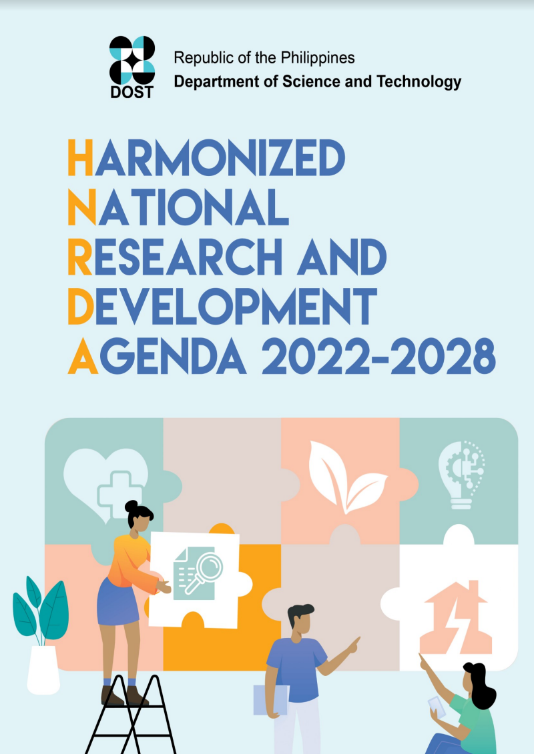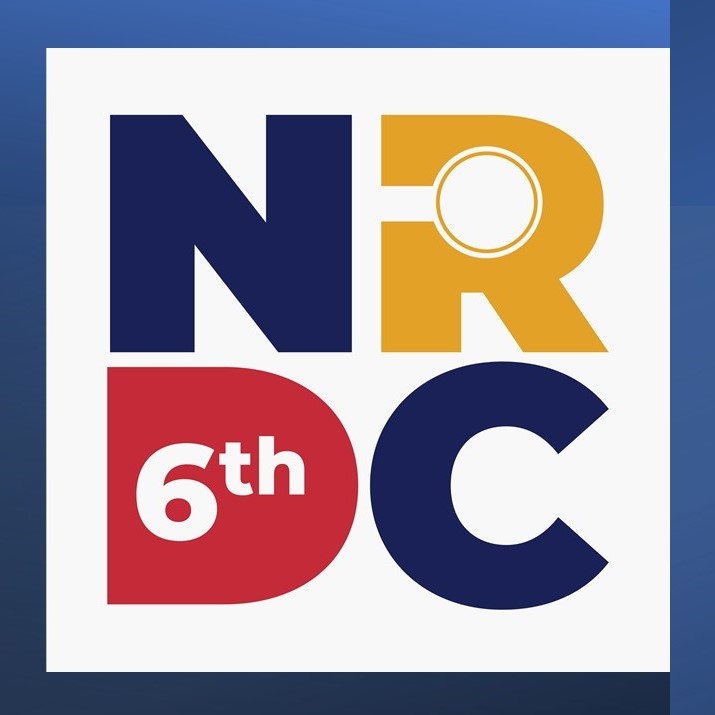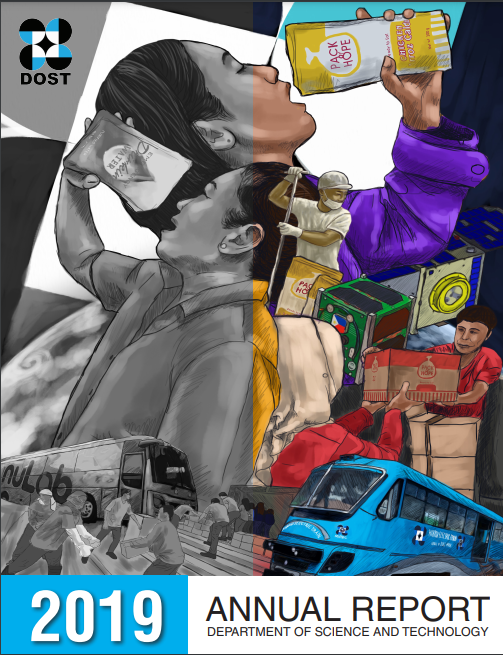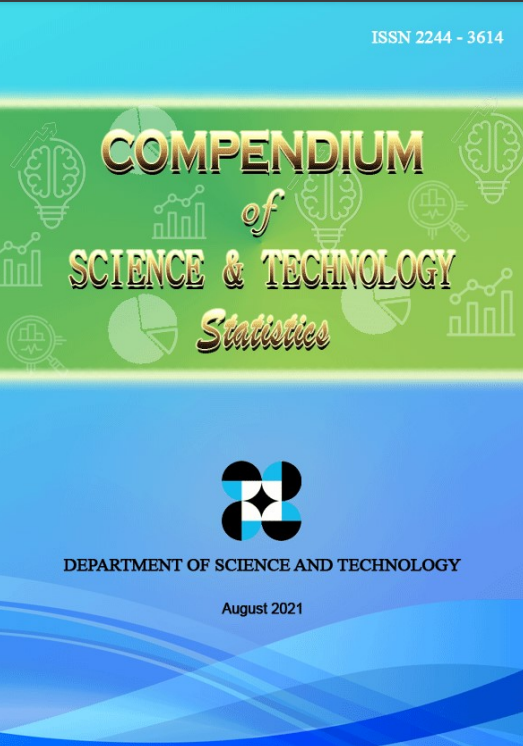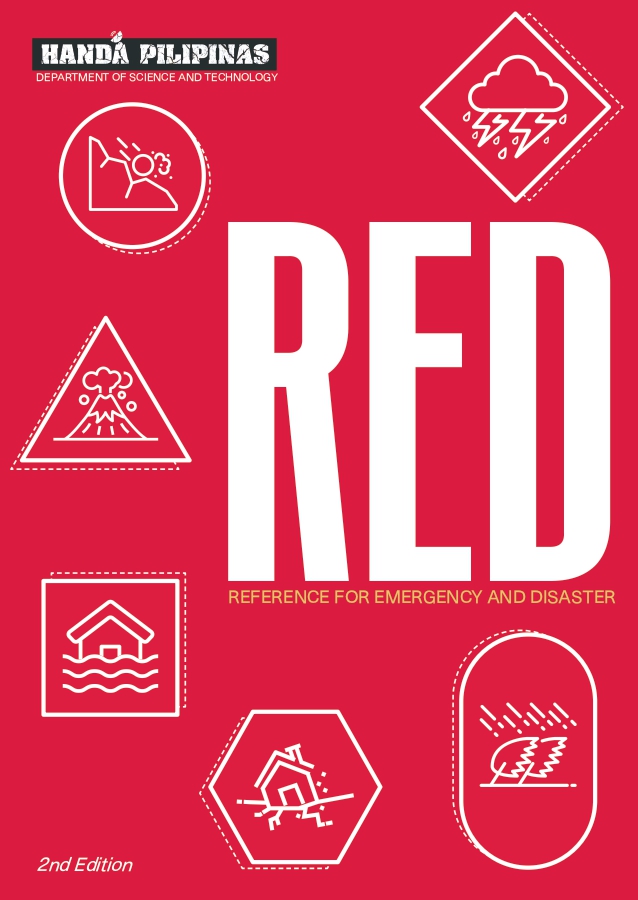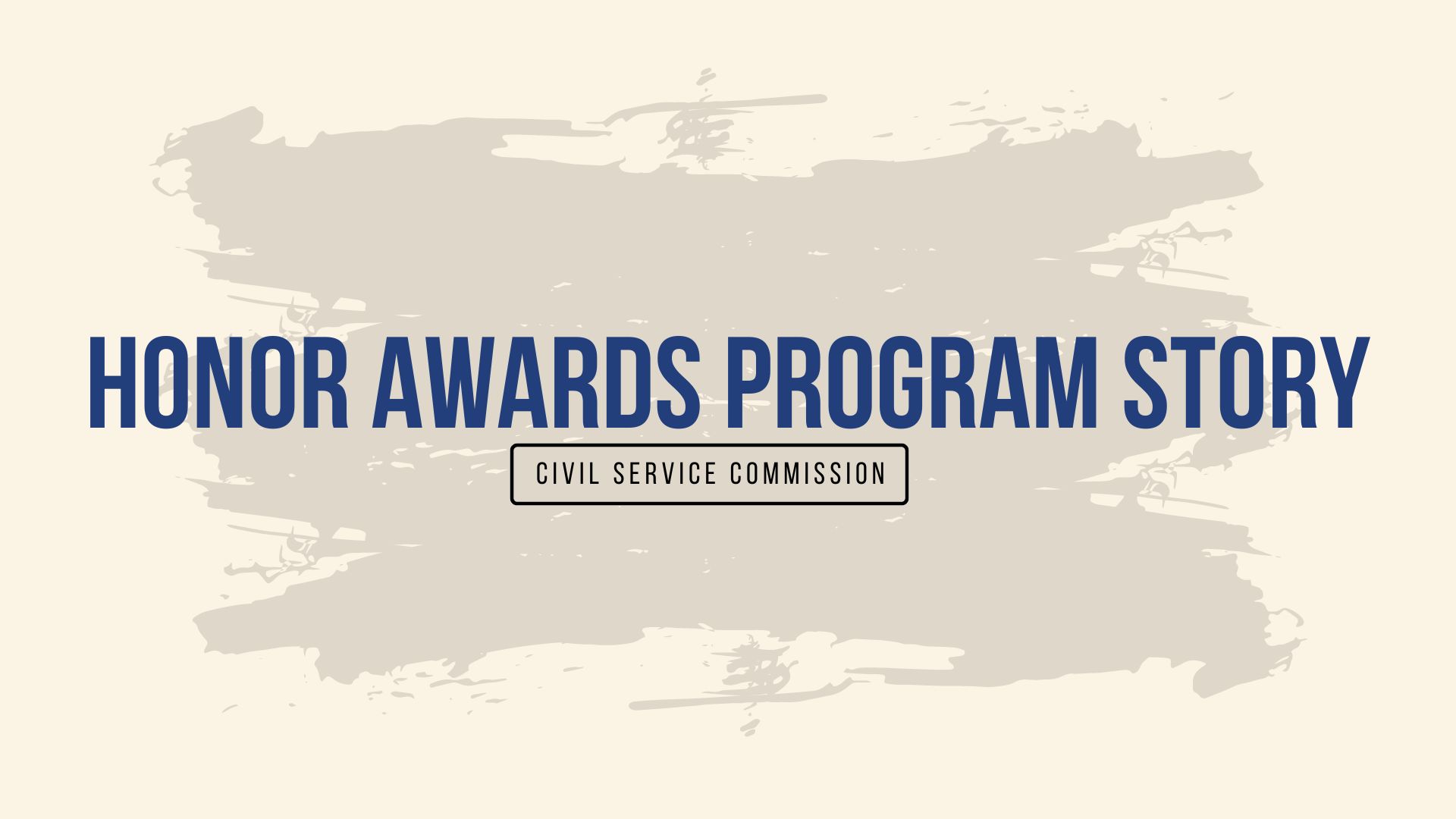Stronger manufacturing industry will reverse aging economy, says DOST advisory body
- Details
- Hits: 2870
The economy may be backsliding, but this situation can be reversed to make the country coast along a route that leads to national progress.
This was how Academician Dr. Michael Tan, University of the Philippines professor and member of the National Academy of Science and Technology (NAST), an advisory body of the Department of Science and Technology (DOST), summed up the NAST-organized Round Table Discussion (RTD)on the country’s economic situationer. During the discussion, the term “development progeria” was used to describe the Philippine economy in comparison with progeria, a medical condition seen in young children that causes them to age faster than normal.
The economy at present is said to be “a young economy mimicking a mature one,” like a child afflicted with progeria, and this may worsen the country’s poverty situation, according to National Scientist Raul V. Fabella.
A child suffering from progeria develops an enlarged head, small and wrinkled face, baldness, and dry skin, among others. However, despite this seemingly rapid aging process, the patient displays limited growth, remaining small in stature with limited movement. The patient remains in this condition until death which mostly occurs in his teenage years.
“Aging” economy can be reversed
The Philippine economy displays similar symptoms, according to Fabella. He noted that its limited growth is due to several factors, namely the depreciation of the Indian rupee which threatens the local BPO industry, the stock market and real estate bubbles, the country’s exclusion from the list of preferred sites for direct foreign investments in tradables, and the overvaluation of the peso, among others.
Fabella, citing studies by Rodrik in 2008 and by Berg and Miao in 2010, said that a 10 percent overvaluation of the currency leads to a growth reduction of 0.2 percent.
These factors hinder industries, thus limiting the movement of business activities and making the economy dry and wrinkled instead of being fresh and rosy.
In his synthesis of the discussion however, Dr. Tan said that unlike progeria which is incurable, development progeria is receptive to treatment, and thus can be cured.
One kind of treatment or solution suggested during the RTD was to strengthen the manufacturing industry.
Strengthening manufacturing industry
Dr. Ramon L. Clarete, dean of the University of the Philippines Diliman School of Economics, suggested that efforts should focus on export-oriented manufacturing industry.
Sixty percent of the total number of exporting firms in the country comprises small and medium-scale enterprises (SMEs) that generate 53 percent of total employment volume and make up 99.6 percent of all registered businesses in the country.
Additionally, Calixto V. Chikiamco, president of the Foundation for Economic Freedom, suggested a manufacturing industry rooted on agricultural growth and productivity, or agro-industrial growth. “Agricultural growth and development supports the manufacturing sector by providing a higher domestic market, affordable labor, and supply of raw materials,” said Chikiamco.
As one of its priority programs, DOST leads and supports industry development initiatives, including those that strengthen local manufacturing. Through its Small Enterprises Technology Upgrading Program (SETUP), the agency provides a package of technology assistance to bolster the productivity and competitiveness of SMEs including those engaged in exports. Among the industries DOST’s SETUP currently supports include food processing, metals, ICT and semicon, furniture, agriculture, aquaculture, among others.
However, to promote net exports, Dr. Clarete cited the significance of peso undervaluation, echoing Fabella’s earlier statement about overvaluation as one of the factors negatively affecting the economy. “When you have a low exchange rate, and you’re in the export business, your revenues in pesos will be lower. And then your cost are in pesos so your profits are going to be squeezed. So the lower the exchange rate or the stronger the peso, the lower would be your profits,” Dr. Clarete explained.
Heart-broken? Try water for healing
- Details
- Hits: 2922
Are you heartbroken this Valentine’s Day? Even if you are happily married or in a satisfying relationship with someone, you may still be at the losing end where your heart is concerned. Your lifestyle, without your knowing, may be leading you toward health risks that can cause life threatening heart conditions.
Heart related diseases are considered as among the leading causes of death around the world. Two known health risks that can lead to serious heart conditions are high cholesterol and high blood pressure.
The good news is both can be prevented. And believe it or not, this can be done through a glass of water.
According to the Daily Nutritional Guide Pyramid for Filipino Adults developed by the Food and Nutrition Research Institute of the Department of Science and Technology (DOST-FNRI), drinking 8 glasses of water a day can improve overall health, including prevention of health risks like high blood pressure and high cholesterol.
Cholesterol is a waxy, fat like substance called lipid found inside cells and blood. Naturally occurring in the liver, cholesterol can also be found in the food we eat, which is mainly from animal fat. Actually, cholesterol is necessary for bodily functions such as in the production of various hormones, bile acids and vitamin D. But, too much of it can be harmful. High levels of cholesterol can block blood flow resulting in thickening, narrowing and hardening of artery walls. This limits oxygen from reaching the heart. Worse, this may lead to heart attack or even something as drastic as death.
Water plays a vital role in preventing these heart-breaking developments from happening. Drinking water can actually thin the blood, thus help the blood pump more smoothly. Moreover, it helps eliminate toxins and increases metabolic rate. And since exercise together with the right kind and amount of food intake contributes to the lowering of cholesterol, water is once again needed in order to replace water lost during exercise.
On the other hand, high blood pressure also known as hypertension, refers to the force of blood pushing against the arterial walls as it make its way through the body. High blood pressure can threaten healthy arteries and can lead to heart disease and stroke. It is also known as a silent killer because there are no real symptoms.
Water plays an equally important role in lowering blood pressure as well since blood is composed of water. Dehydration, or loss of water, affects blood pressure. When the body is in dehydrated condition, the flow of blood to the kidneys will be reduced. Thus, the body reacts and tells the brain to constrict the veins and arteries, making the blood pressure go higher. But with enough water intake, blood will flow normally to the kidneys, thus averting the occurrence of health risks.
Drinking the right amount of water likewise helps flush excess salt intake in the body, which also causes blood pressure to rise.
So this Valentine’s Day, prevent your heart from being broken by diseases. To have enough water that will keep it healthy, have a bottle of water with you during the day. When exercising, always make sure to drink water before, during and after workout. Try the habit of beginning and ending the day with a glass of water.
If you have a hard time remembering to drink water, you can actually make a schedule or a reminder. Use urine as an indicator. If it’s dark yellow and has a strong odor, it means you should drink more water. The urine of a well-hydrated person is odorless and almost colorless.
And when you go out for your Valentine’s dinner, remember to drink water after meals. Not only will it help hydrate the body, it is also free.
Color your diet red, yellow, and green on Valentine’s Day
- Details
- Hits: 3205
Did you know that aside from the color red, other colors may also be fashionable on Valentine’s Day?
February may be the love month but love is not just about romance. Love incudes self-love, or loving oneself, in order to be happy, productive, and be able to take care of loved ones.
One way of loving yourself is by taking good care of your body by eating the right kinds of food – from fruits, vegetables, and other foods which come in a burst of colors. According to the Daily Nutritional Guide for Filipino Adults developed by the Food and Nutrition Research Institute of the Department of Science and Technology (DOST-FNRI), one should take three servings of ½ cup of cooked vegetables and 2-3 servings of fruits every day.
There are many color-filled health-friendly dishes which you can whip up for your partner, or your family and friends to perk up your Valentine’s Day lunch or dinner. Not only do they make the most romantic day of the year more exciting; they also make you healthier, more glowing, and more energetic.
For sun-burst orange-and-yellow Valentine treat, choose from a variety of foods such as melons, mangoes, peaches, papaya, oranges, banana, pineapple, passion fruit, carrots, sweet potatoes, squash and sweet corn. The vibrant colors of orange and yellow food look great on the plate and also help the eyes and skin. Carotenoids are responsible for these bright colors. The most common carotenoid is the beta-carotene which can be converted from foods into vitamin A in the body. This nutrient promotes good vision, a strong immune system, and helps reduce the risk of heart disease.
There are many ways to prepare your sunshiny Valentine treat. You can make your own homemade carrot and squash soup. You can also sprinkle grated carrot, papaya, mangoes or sweet potatoes to cheer up your salad. Or you can whip up a chunky fruit salad of melon, mango, peach, papaya, orange, pineapple, and sweet corn. For a dash of protein, you can mix tuna with sweet corn and use it to fill sandwiches.
The greens can actually make your heart red healthy, aside from lowering the risk of colon cancer for their full fiber content. For fresh and crisp hearts day feast, there are many greens to choose from, including asparagus, spinach, lettuce, cucumber, broccoli, sprouts, cabbage, green beans, green peas, green pepper, leeks, onion spring, green apples, grapes, and kiwi fruit. Many of these green foods are good sources of lutein which helps protect the eyes from macular degeneration that leads to blindness.
To eat more green foods, serve green vegetables with meals everyday. If you are fond of stews and stir fried food, leeks can be a welcome green addition, just like how green peas can freshen up pasta dishes, curries and even plain boiled rice. For breakfast, spring onions and green peas can fill up omelets.
Blue and purple hearts may not be good, but blue and purple foods are good for the heart. Choose from grapes, plums, prunes, eggplant and raisins, all packed with anthocyanins that can protect against cancer and risk of heart disease. Moreover, these foods tend to help lower blood pressure and cholesterol levels.
To increase your blue and purple food intake, try adding a tablespoon of raisins to breakfast cereals or porridge. You can also make a healthy coleslaw using grated carrot, thinly sliced onion, shredded cabbage and raisins mixed with low-fat yogurt to keep the calories down. For pasta lovers, eggplant is a welcome addition to the meat mixture for lasagna.
White foods such as onions, garlic and turnips are known to reduce heart disease, as well as pain and swelling associated with inflammatory conditions like osteo- and rheumatoid arthritis. Garlic contains antioxidant called allicin that acts as natural antibiotic and helps reduce blood pressure.
Add more whites to your diet by adding onions and garlic to stir fried foods, pasta dishes, stew and curries. You can also make your own onion garlic dip or roast onions in a little olive oil to go with vegetables. Finely chopped onions can be mixed also to tuna, chicken and egg sandwich fillings.
Red foods such as strawberries, cherries, red apples, tomatoes, grapefruit and red peppers are high in lycopene that can help protect against cancers of the lung, colon, breast and skin. The reds may also help lower blood cholesterol and reduce the risk of heart disease.
To have more red in your diet, add sliced red peppers and apples to salad, or a can of tomato sauce or chopped tomatoes to stews and casseroles. Home-made tomato soup is also a welcome treat. You can also try adding a handful of strawberries and red apples to breakfast cereals or porridge.
With many colors to choose from, Valentine’s Day will not only be colorful and hearty but also healthy. Enjoy the love month this year and the following years with a healthy heart, strengthened by food with a rainbow of colors.
DOST targets greater interest in S&T via int’l science fair
- Details
- Hits: 5641
Science awareness in the Philippines is poised to take off for higher ground. With the mounting of the 1st Philippine International Science Fair, a platform is raised for science and technology (S&T) specialists and students all over Asia-Pacific to exchange ideas and help develop among the Filipino youth a mindset geared toward S&T.
Organized by the Department of Science and Technology (DOST) through the Philippine Science High School (PSHS) in partnership with First Pacific Learning Academy, the international fair which carried the theme “Building a Culture of Science” was held from February 3-6, 2013 at the Ynares Center in Antipolo City.
One of the activities during the four-day event was the Community Fair where more than 60 students from the PSHS System as well as schools from select Asia-Pacific countries presented their research findings and shared their experiences in front of an audience composed of S & T enthusiasts, specialists, students, and the general public.
Aside from instilling among students the value of research and its proper applications, the community fair also aimed to bridge the divide between science and the general public. In particular, the fair served as a training ground for the students on how to best present their research projects to a wider segment of the population, including those not well versed in S& T, and thus break the barriers faced by science researchers and communicators.
“It is heartening to note that young students are being trained in the rudiments of research. They are also encouraged to share their results in the larger science community. This recognizes and affirms the endeavors of our scholars,” DOST Secretary Mario G. Montejo said.
Dr. Josette P. Biyo, executive director of PSHS System, added that aside from popularizing science, making it alive, and bringing it closer to the hearts of the people, the said fair hopes to inspire the youth to love science and encourage them to pursue S&T careers in the future.
Among the researches and studies by PSHS students presented during the Community Fair were . “Production of Seed-oil Derived Biodiesel from Garcinia magostana” by Christine C. Bautista and Paradau Laarnie P. Valerio of PSHS Main Campus, “Bioethanol Production from Enzymatically Saccharified Thysanolena latifolia (Tiger Grass)” by Janreich F. Miramon, Ruel Jan Anthony A. Moldez, and Matthew Martin P. Sanchez of PSHS-Central Visayas, and “Health Status of the High School Students in Balo-I, Lanao Del Norte Based on Body Mass Index” by Madelein D. Sorino and Jommalyn M. Tabal of PSHS-Central Mindanao.
Meanwhile, the following research projects were presented by students from other parts of the Asia-Pacific region: “Realization of Structural Colors of Morpho Butterflies by Printing Photonic Crystal Nanobeads” by students from Korea Science Academy of KAIST in South Korea, “Experimental and Computational Studies in Porphyrin Derivatives for Dye-Sensitized Solar Cell” by students from Mahidol Wittayanusom School in Thailand, and “Solving Environmental Problem Using Quality Control Circles (QCC) by students from Penang, Malaysia.
Aside from the Community Fair, the 1st Philippine International Science Fair also featured a Science Congress, Students Summit, exhibits, sessions with S & T experts, study critique, and other activities geared toward generating greater interest on S & T and highlighting its indispensable role in solving pressing national problems.
The S & T experts who participated in the event were Dr. Edsel Maurice T. Salvaña, hailed as one of Ten Outstanding Young Persons of the World for 2012; National Scientist Dr. Lourdes J. Cruz, 2010 L’Oreal-UNESCO Woman of Science awardee; and Earl Martin Valencia, named among the New Faces of Engineering for 2007 in Los Angeles.













